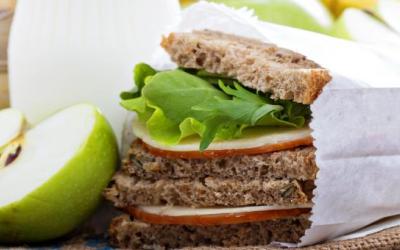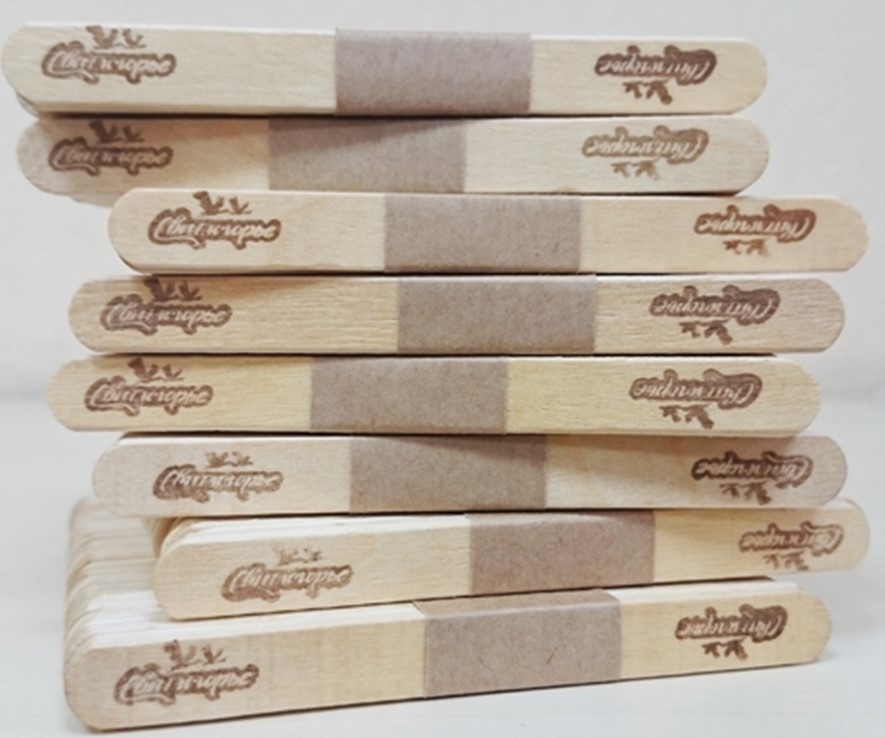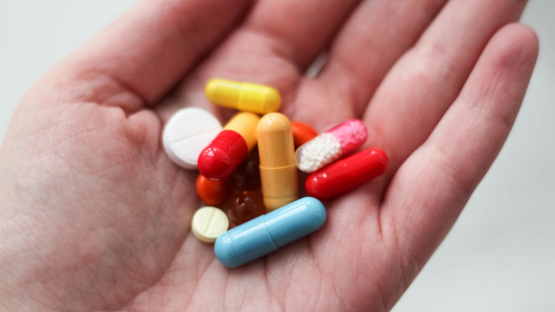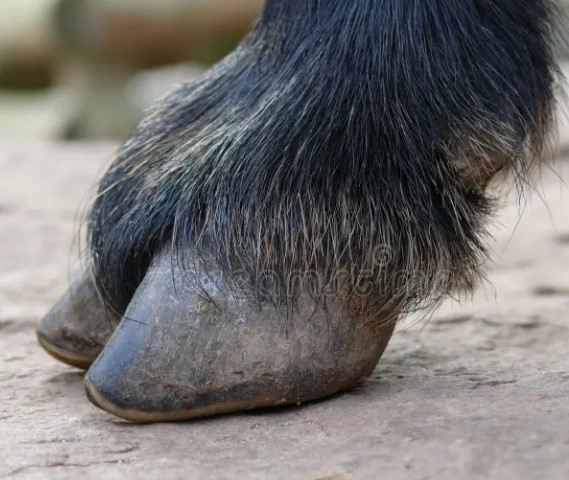Happy Cows in Organic Farming: Challenges and Solutions

This is written by a group of Polish scientists from the Institute of Animal Science, Warsaw University of Life Sciences, and the Institute of Animal Genetics and Biotechnology of the Polish Academy of Sciences in an article published in the journal Animals 2023 on the MDPI portal.
“CPS organic grazing is expected to continue to develop,” the authors report. - This is due to pressure from the public, which perceives grazing as a necessary element of the welfare of cattle. However, based on behavioral studies of cows, it should be noted that an increase in the average annual temperature and the associated risk of heat stress in cattle pose a significant threat.
On the other hand, ranchers recognize the economic benefits associated with grazing. Pasture is the cheapest forage base for ruminants, especially at a time of growing competition for acreage for grain production.
A growing human population needs more and more food, and thus the area for growing high-energy fodder crops may shrink in the future. While some types of farm animals, such as poultry and pigs, absolutely need cereals to maintain productivity, cows and other ruminants may use feed that is not suitable for humans. Consequently, cattle can be successfully raised on lower quality land without competing for acreage for grain production.
In this context, Holstein Friesian cows, due to their adaptation to high MILK yields, may not be the optimal breed for extensive milk production. Based on current research and review work, it is difficult to find specific factors that predispose cows of any breed to use in organic systems. This is due to the high variability of breeds, climatic conditions and nutrition. However, there is ongoing work to find traits suitable for organic or pasture systems, which gives some hope that in the future there will be a separate breeding index for organic cows.
What is cow welfare
Organic farming is not a new way of producing food. Its development dates back to the beginning of the twentieth century, although initially the initiative of the pioneers of organic farming was not popular. The breakthrough came in the 1970s when, along with growing concerns about food quality, there was great interest in this method of growing crops and raising animals.
Many countries have introduced various subsidies in response to the growing demand for organic products, especially in the European Union, where support for organic farming is now carried out under the Common Agricultural Policy program.
Currently, both in Europe and around the world, organic farming is undergoing a period of rapid development. The number of lands certified as organic lands is increasing every year. In 2019, 72.3 million hectares of land were certified worldwide, which is 1.5% of all crops. At the same time, in Europe, the share of organic land is 3.3% of all crops.
Over the past decade, the area under organic crops has increased by 102.4% worldwide, while in Europe this growth was 64.8%. The poultry sector showed the fastest growth. The total number of broilers and laying hens increased by 110% between 2010 and 2019. Dynamic growth was also observed in the organic milk sector. The number of organic dairy and beef cattle increased by 81% over the same period.
At the same time, in different countries of the world, the rules and standards of organic farming are different.
Organic products produced in one country may not have organic status when exported to another country with different legal requirements. In the European Union, organic farming laws are unified and strictly sanctioned. At the level of community law in the European Union, the most important legal instrument relating to organic production is Regulation (EU) 2018/848 of the European Parliament and of the Council of 30 May 2018 on organic production and labeling of organic products. This document defines what an organic product is and defines the goals and principles of organic production. In Chapter II, Articles 4 and 5 of the aforementioned regulation, there are provisions on the need to ensure a high level of animal welfare standards, i.e. ability to meet behavioral needs characteristic of this animal species. In addition, the legislator draws attention to the need to use rare or endangered local breeds. Other requirements for organic farming are the following: limiting the use of allopathic medicines, prohibiting the use of milk substitutes, and limiting routine painful procedures such as dehorning cattle and castration of bulls.
The priority is obviously given to animal welfare. In the case of organic production, welfare has been listed as one of the main objectives of this farming system.
The problem lies in measuring well-being, taking into account the needs of different breeds living in different conditions. In the past, veterinarians and farmers considered animal welfare primarily in terms of animal HEALTH and productivity, and paid less attention to behavioral aspects. Currently, attention is also paid to psychological issues, such as social relations between individuals in the herd, the occurrence of inbreeding and the availability of the barn.
Differences in the definition of the term "welfare" can be seen by comparing the perceptions of consumers and breeders.
For the consumer, the belief in better living conditions for organic animals compared to traditional production is the main reason why they buy the usually more expensive organic products. Consumers prioritize animal access to the outdoors, general natural behavior and good treatment of animals. This is due to the tendency of people far from farming to humanize animals.
On the other hand, it is more important for producers to keep the animals healthy and to minimize the pain they experience. Thus, well-being is a complex issue, and how it is perceived may differ in different social groups. Therefore, it was necessary to create a common definition of well-being. Currently, one of the most widely used definitions is that published by the World Organization for Animal Health (OIE): “Animal welfare means the physical and mental condition of an animal in relation to the conditions in which it lives and dies. An animal experiences good well-being when it is healthy, comfortable, well-nourished, safe, free from unpleasant conditions such as pain, fear and distress, and is able to exhibit behaviors
cow welfare elements
Various types of protocols have been developed to assess the welfare of animals on farms, including the use of modern technologies, thanks to which it is possible to obtain accurate data not only about the environment in which animals live, but also about the behavior of the cows themselves and their health.
One example of improving cow welfare through automation is monitoring conditions in the barn and appropriately managing fans, sprinklers and other infrastructure that manages the microclimate in the barn. This practice greatly reduces external stresses, such as heat.
Another example is sensors that change the behavior of cows. Sensors of this type allow you to accurately control the amount of time that cows spend eating, chewing and moving. Some sensors are able to track the location of a particular cow in the barn, which allows them to learn about the natural behavior of cows and quickly alert farmers to abnormal situations. Lameness, udder inflammation and metabolic disease can be detected quickly, often before clinical signs appear.
In addition to problems that are easy to quantify, there are other aspects: the relationship between man and animal, or the impact on animal behavior of any kind of barn automation. These aspects from a behavioral point of view are still poorly understood, although negative interactions with humans have been shown to lead to shyness and reduced productivity in animals.
Progressive automation reduces the need for animal contact, but many activities still need to be done manually, making human-animal interaction inevitable. It is important that this contact is appropriate from birth. Therefore, an important part of maintaining a high level of animal welfare is the proper training of farm personnel in the handling of animals.
Another interesting welfare issue is access to elements that enrich the animal's environment.
An example is a brush that allows animals to groom themselves. In the wild, cows rub themselves against tree trunks to cleanse their bodies and reduce stress. In barns, few people still install brushes, although in one study seven days after installing a mechanical brush, brushing time increased by more than 500%. It has been proven that the need to scratch in cows is just as strong as the need to eat.
Until now, there is no method to unambiguously determine the welfare of cows. Livestock keepers who want to improve the welfare of their animals need to work on many levels, including veterinary procedures.
Procedures that cause pain
As herbivores, cattle endure pain to the last. This behavior is a way of defense against predators, who usually focus their attention on the weakest animal in the herd and attack it. Without showing pain, such animals do not stand out from the herd, so as not to become a victim of predators.
The nature of the masking of pain symptoms can erroneously give the impression that cattle are insensitive to pain. Therefore, it is difficult to recognize and evaluate the intensity of perceived pain in cattle based on behavior.
Pain-inducing procedures, such as castration of beef cattle and dehorning, are partly restricted in the EU by organic farming rules and only performed in certain situations. In the case of dehorning, it is necessary to justify the need for this treatment and on this basis, in certain cases, an appropriate permit is issued. With regard to castration, this physical procedure is allowed in cases justified by the preservation of the quality of the product, but must be performed using anesthetics, as in conventional farms.
In normal herds, dehorning and castration are not limited, but in calves, dehorning can be done without anesthesia. Current recommendations include the administration of analgesics to all animals, for all surgical procedures, and for the removal of horns and horn buds.
The main reason for dehorning is to improve safety for humans as well as the safety of the animals themselves, mainly in free range cases where fighting is due to hierarchy. Due to the prevalence of this practice and the pain that calves experience during and after the procedure, dehorning has been heavily criticized by animal rights organizations such as PETA (People for the Ethical Treatment of Animals).
As a result, the concept of selecting individuals with the "hornless" gene arose. Hornless animals have always existed in cattle populations, but intense selection for productive traits has forced this gene out of the population. This situation is especially evident in the Holstein breed. Consequently, the small number of hornless individuals limits the possibility of effective breeding work using hornless bulls with high genetic potential.
The solution to the issue of obtaining hornless individuals can be genetic engineering methods. However, the public is rather distrustful of genetic modification.
In addition, if we talk about the possibility of using these solutions in organic farming, then it is possible to implement the selection of individuals with a natural hornless gene, while the implementation of molecular methods themselves on organic livestock is prohibited by law in the EU. But at present, the rules of organic farming do not prohibit the use of semen from ordinary bulls born using molecular methods. Thus, outstanding individuals from traditional breeding can transfer their traits to animals that will be kept in organic conditions.
The point of castration in organic and conventional beef production is that castrated males (bulls) show higher MEAT quality, as aggressiveness, sexual behavior and dominance struggles are reduced after the procedure, and therefore there is a much lower risk of bruising and injury after castration increases intramuscular fat content and tenderness of meat. Recently, the veterinary opinion is gaining popularity that the application of a rubber band at about the age of 4-6 weeks is a less stressful procedure than surgery.
Pasture issue and selection
It is believed that grazing has a positive effect on the health and behavior of cows, as they fully display their natural behavior, interacting with other members of the herd, can lie anywhere and selectively feed on selected plant species.
However, a number of studies have shown that some of these positive effects disappear as the distance traveled by livestock from the barn to the pasture increases. Forcing cows to stay on pasture during hot weather or other adverse conditions also negatively affects their well-being.
The motivation of livestock to stay on the pasture varies throughout the day. Dairy cows generally prefer to stay indoors during the day, especially when temperatures and humidity are high, and instead spend most of their time grazing at night.
The feeding behavior of cows in the absence of a struggle for resources also varies depending on the time of day. Cows are especially active at dawn and dusk. Consequently, the periods of high forage intake are mainly at sunrise and sunset, and again, the pasture is not always the best place to receive food. High-yielding cows with access to pasture and ready-made complete feed located in the barn prefer ready-made ration - it is easier to consume than grass, has a higher energy concentration.
On the other hand, pasture grazing makes it possible to diversify the diet and satisfy the natural need of cows to pluck blades of grass. And here it is important to understand the importance of weather when grazing.
The grazing season largely coincides with a period of high temperatures that are predicted to get hotter every year.
Cows, as large animals, have an unfavorable ratio of body volume to the area of the skin, because of this, they have difficulty in heat exchange. Due to the ever-increasing lactation capacity, fermentation processes in the rumen generate even more heat energy. As a result, cows are subject to heat stress, which causes reduced productivity, reproductive problems and, in extreme cases, collapse. It also affects the quality of milk, reducing its technological suitability.
Heat stress is affected by a number of factors, including air movement, sunlight, coat length and/or color. Dark-coated cows (including Holstein-Friesian) are more susceptible to heat than light-coated cows.
Over the course of evolution, cattle have developed several mechanisms to cope with high temperatures. One of them, which is easy to observe, is a decrease in feed intake. Less feed intake reduces the intensity of exogenous fermentation processes occurring in the rumen, which, in turn, leads to a decrease in productivity.
In high producing cows, reduced feed intake at the start of lactation has been shown to increase negative energy balance, which in turn can lead to problems with efficient insemination. An increase in temperature causes dilation of blood vessels in the skin, as well as increased sweating and shortness of breath.
In an attempt to adjust to the rising temperature, cows change their behavior by reducing their lying time in favor of staying upright. The standing position increases the heat dissipation area and minimizes contact with the heated ground. But more time spent standing puts a lot of strain on the limbs and increases the risk of lameness. If the pasture has access to shaded areas, the cows are willing to use it.
There are various methods to deal with high temperatures in closed systems when cows are not out on pastures. This is mainly an effort to ensure the best possible ventilation of the facility through curtain walls and mechanical ventilation. Sprinkler systems are also often installed.
In the case of cows in a pasture, many engineering solutions are not possible, but it is possible to provide for shaded areas, when shade is provided by canopies or groups of trees that are of particular value in terms of biodiversity, the installation of sprinklers.
One study stated that resting in the shade and turning on the sprinklers 90 minutes before the day's milking provided an effective and immediate reduction in the body temperature of dairy cows grazing on pasture.
Different breeds of cows react differently to elevated temperatures. Among the four breeds studied (Alentejana, Limousine, Holstein Friesian and Mertolenga), the Holstein Friesian breed showed the fastest signs of heat stress, while the Portuguese Mertolenga breed showed the highest tolerance to high temperatures.
Finally, the quality of forage on organic pastures is not always consistently high. Twice a year there is a change in the feed ration (pasture in summer and winter based on hay and silage), which causes a change in the rumen microbiome.
In addition, the composition of pasture forages itself varies and depends on the type of plants, stage of development, and soil and climatic conditions. The spring forage has a high nutritional value, juicy and easily digestible, and in the later stages of growth it has an increased fiber content, which reduces intake and digestibility. The type of grazing itself also affects the subsequent quality of the pasture. Excessively low cow densities lead to selective forage grazing, resulting in plants at different stages of growth.
Comparing the food base available in organic and conventional systems, it can be concluded that in organic systems, the concentration of feed energy is much lower than in traditional systems.
The content of highly productive cows in an organic system is associated with a number of problems, the most important of which is the provision of high-calorie feed during the first phase of lactation. Therefore, there is a high risk of creating a negative energy balance in highly productive cows, which, in turn, leads to a decrease in reproductive performance. In addition, cows on organic farms are more prone to ketosis.
Different breeds are able to assimilate pasture feed to varying degrees. Thus, grazing Jersey cows require 7-8% less feed per kilogram of milk fat and protein produced compared to Holstein-Friesian cows.
Therefore, when choosing a breed for an organic system, special attention should be paid to the genetic traits of the breed and selection indices. Due to the nature of organic production, it is essential that animals are hardy and suitable for grazing in open grazing systems.
Currently, most countries do not use a separate system for assessing the productivity of organic animals. This is due to the small number of animal populations and liberal reproductive technology regulations.
The lack of a separate assessment of organic animals encourages the use of Holstein Friesian cows, which, due to their popularity and performance in intensive production systems in many countries, are also the dominant breed in organic systems. But, as mentioned above, this is not the optimal breed for organic production. Due to many years of breeding for productive traits, many health indicators have deteriorated significantly, including hoof health, udder health and fertility.
As a result, more and more attempts are being made to create a separate index that takes into account the interaction of the genotype and the environment. Demonstrating the existence of genotype-environment interactions within a given trait leads individuals of the same genotype to behave differently depending on the environment. When animals are genetically adapted to certain conditions, they will be more productive and production costs will decrease.
With further tightening of organic farming regulations, the scale of genotype-environment interaction is likely to increase. Therefore, animals selected for conventional systems may not be suitable for organic systems.”
Read together with it:
- The Russian Ministry of Agriculture proposes extending veterinary regulations until 2032.The extension includes regulations for the prevention and eradication of diseases such as bradsot (Clostridium septicum), trichinosis (Trichinella), blackleg (Clostridium chauvoei), and porcine reproductive and respiratory syndrome (PRRS). The proposed changes stipulate the following new deadlines: for bradsot and trichinosis - from March 1, 2......
- "Белорусские продукты - страновой бренд". В Гродно поздравили работников сельского хозяйства областиФото 13 ноября, Гродно. В Гродно торжественно поздравили с профессиональным праздником работников сельского хозяйства, передает корреспондент БЕЛТА.Этот праздник в нынешнем году для аграрной отрасли региона особенный - впервые в истории в области собрали более 2 млн т зерна с учетом кукурузы. Как отметил в беседе с журналистами председатель комитета по сельскому хозяйству и продовольствию облиспол...
- He crawled to the icon with prayer. The true story of a man who overcame drug addiction.Alexander Ovchinnikov. Topic News. Our project's hero was a drug addict for many years. The thought that this was a dead end never left him, but his addiction proved stronger. One day, when he could no longer walk, he crawled to an icon in prayer. This became his first step toward a new life. Today, he heads a charity center that helps those who have given up hope and are unable to quit ALCOHOL an...
- Низкое предложение и устойчивый спрос: в Аргентине растут цены на мясоЦены на говядину снова выросли, что отразилось на полках супермаркетов и в мясных магазинах. За последние две недели розничные цены выросли на 8–12%, а на некоторые популярные отрубы рост превысил 15% по сравнению с октябрем. Тем не менее, продажи остаются высокими: потребители продолжают покупать, принимая новые цены и закрепляя тенденцию, которая повторяется каждый год в конце года, когда спрос ...
- Колумбия: При экспорте скота сертификация и прослеживаемость больше не являются необязательнымиВысококачественное животноводство, особенно при экспорте, требует сертификации и прослеживаемости. Это необходимые условия для выхода и конкуренции на многих международных рынках, а также на некоторых всё более требовательных внутренних рынках. Колумбийское животноводство не является исключением из этих правил, и, хотя предстоит ещё многое сделать, всё большее число ферм и компаний внедряют эти ме...


























































